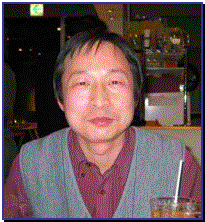|

Address: Sichuan
Institute of Parasitic Diseases,
10, University Road, Chengdu
610041,
Sichuan Province, P.R. China
Education
Background 
:
·
1980.9-1985.7 Department of Medicine, Luzhou Medical
College, P.R.China B.M, M.D.
· 1997.4-1998.3 Institute of Medical Science, The
University of Tokyo, Japan
· 1999.9-2000.7 Graduate School, West China
University of Medical Sciences, P.R.
China.
· 2001.9-
Now Department of Parasitology, Asahikawa Medical College, Hokkaido, Japan.
 Work Experience: Work Experience:
·
1986-1987 Survey on the infection status of Echinococcus species in the population
and wild animals
at Ganzi Tibetan Autonomous Prefecture of Sichuan.
·
1987-1988 Effect study of newly-developed drugs on
expelling intestinal helminth (supported by UNICEF).
·
1989-1990 Survey on parasite infection situation in the Tibetan residents at Ganzi
Tibetan Autonomous Prefecture of Sichuan.
·
1991-1992 Forecasting study on malaria epidemic situation; Studies on
diagnostic methods for malaria cases.
·
1993-1995 Studies on Chloroquine-resistant Plasmodium species; Studies on case-detection and
control strategy for imported falciparum malaria (supported by The Research
Funds of
Sichuan Provincial Health Bureau).
·
1995-1996 Studies on potential risk factors in the
areas with insecticide-impregnated bednet; Studies to compare the efficacy between
Deltamethrin-impregnated bednet and its adding
DDT spraying in cattle-sheds ( both projects were supported by WHO/TDR).
·
1997-1998 Research into the immunological mechanisms of controlling cerebral malaria in
Japan.
·
1999-2001 Study on serodiagnosis and epidemiology of
echinococcosis in Sichuan, China (supported by NIH Funds).
·
2001-now Study on serological differentiation of AE from CE and other
diseases in Japan (supported by NIH Funds).

Principal
Publications:
1. Investigation of parasitoses among in-patient Tibetans in Daofu County
of Ganzi Tibetan Autonomous Prefecture.
Modern Preventive Medicine. 1993; 20(2):121.
2. Surveillance on imported falciparum malaria in Sichuan. J Practical
Parasi Dis. 1994; 2(3):43-44.
3. Correlation analysis between the density of An. Anthropophagus and malaria. Chin J Parasi Dis Ctr. 1997;
10(1):66.
4. Pneumocystis carinii infection in red-bellied tamarines and cynomolgus
monkeys. Parasitology International. 1998;47(suppl):95.
5. The role of T helper cells and their cytokines during anti-malarial
immune. J Preventive Info. 1998;14(3-A):13-15.
6. The role of village doctors and their influence factors in malaria
control. Chin J Parasitol
Parasitic Disease. 1998;16(4):287-290.
7. Potential risk factors of malaria infection at the areas after
successive application of insecticide-impregnated bednet. J Practical
Parasitic Disease. 1998:6(4):164-168.
8. Surveillance of risk factors from imported cases of falciparum malaria
in Sichuan, China. Southeast Asian J Trop Med Public Health. 1999
June;30(2):235-239.
9. Effect of Nippostrongylus brasillensis induced alterations in T
helper cell subsets on Plasmodium berghei infection in mice. Chin J Parasitol Parasit Dis. 2000,18(5):286-290.
10. Immunoregulation of CD4+ T Cells in intraerythrocytic malaria parasite infection. Chin J
Parasitol Parasit Dis. 2000, 18(6):359-362.
|
![]()
![]()
![]()
![]()
![]()
![]()
![]()
![]()
![]()
![]()
![]()
![]()
![]()
![]()
![]()
![]()



















